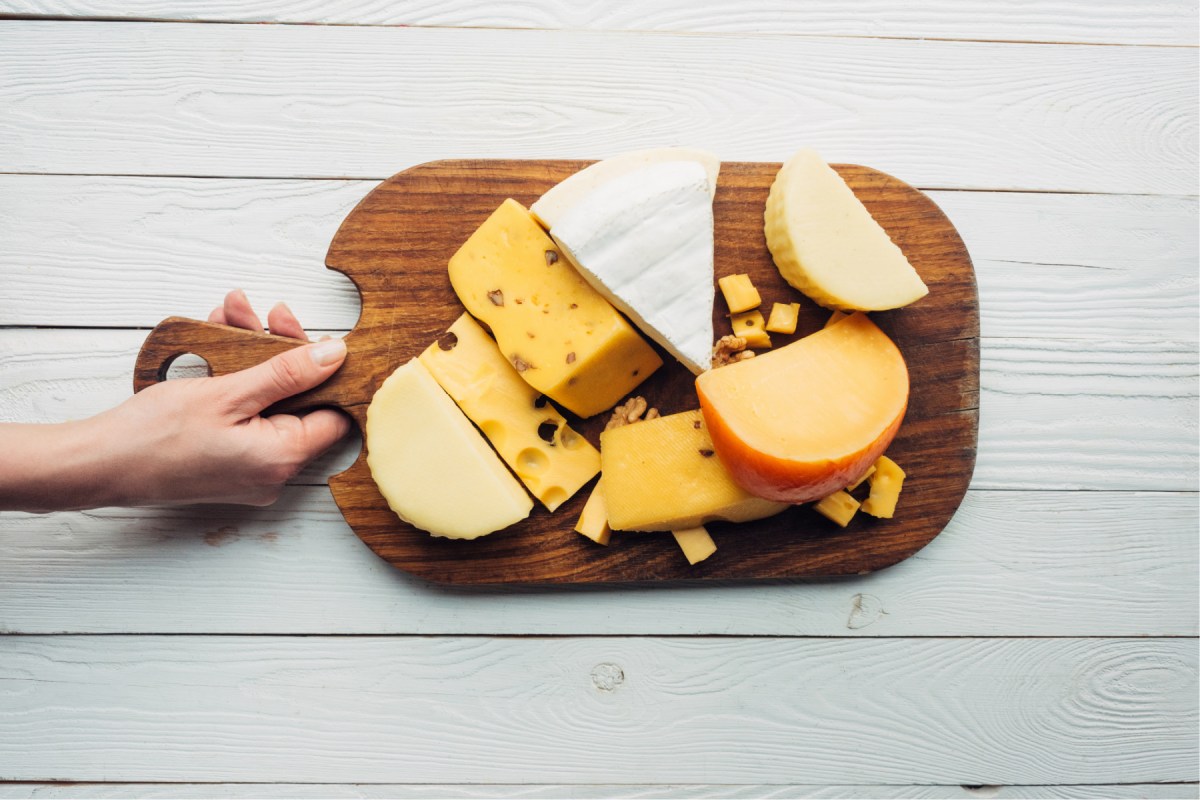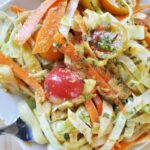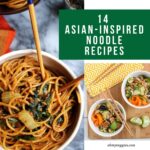Dive into the creamy, nutty world of dairy-free raw vegan cheeses! This comprehensive guide unveils the secrets to crafting delectable, plant-based cheeses at home, from understanding fundamental principles to mastering advanced techniques and flavor combinations. We’ll explore a variety of nut and seed bases, providing detailed, step-by-step recipes for classic cheese styles like cheddar, cream cheese, and mozzarella. Get ready to transform simple ingredients into sophisticated, healthy, and utterly satisfying dairy-free delights.
Learn how to achieve the perfect texture – creamy, firm, or crumbly – by understanding the role of each ingredient. We’ll cover everything from proper food safety and handling to troubleshooting common issues like separation or dryness. Discover creative ways to serve your homemade cheeses, from simple pairings to show-stopping culinary creations. Prepare to embark on a delicious journey into the vibrant realm of raw vegan cheesemaking!
Advanced Techniques and Flavor Combinations

Mastering dairy-free raw vegan cheese-making involves understanding how to manipulate textures and flavors to create a diverse range of culinary experiences. This section delves into advanced techniques and ingredient choices to elevate your cheese-making skills, allowing you to craft cheeses with unique and nuanced profiles. From creamy cashew creations to firm, nutty delights, the possibilities are vast.
Texture Control in Raw Vegan Cheeses
Achieving the desired texture is paramount in raw vegan cheese-making. The interplay of liquid content, nut base, and thickening agents directly impacts the final consistency. A creamy texture, for example, is often achieved through the use of a high-quality blender to create a smooth, emulsified mixture. Conversely, a firmer texture can be obtained by using a higher ratio of nuts to liquid, or by incorporating ingredients like agar-agar or chia seeds which act as natural binding agents. A crumbly texture might be achieved by using a drier nut base and less liquid, or by incorporating ingredients that promote a more granular structure. The careful selection and proportioning of ingredients are key to mastering these techniques.
The Role of Ingredients in Flavor and Texture
Different ingredients contribute unique characteristics to the final product. Cashews, for instance, provide a creamy base and mild flavor, while almonds offer a slightly more assertive taste and firmer texture. Sunflower seeds contribute a slightly tangy note and a slightly drier, crumblier texture. The addition of lemon juice or apple cider vinegar can enhance the tanginess and aid in thickening. Nutritional yeast adds a cheesy, savory flavor, while coconut oil contributes creaminess and a subtle coconut aroma. The careful selection and combination of these ingredients allow for endless flavor and texture variations.
Incorporating Herbs, Spices, and Flavorings
Herbs, spices, and other flavorings unlock a world of culinary creativity. Fresh herbs like dill, chives, or basil add vibrant freshness. Spices such as smoked paprika, garlic powder, or onion powder impart savory depth. Other flavor enhancers include nutritional yeast for a cheesy taste, miso paste for umami richness, or various extracts like vanilla or almond for sweetness and aromatic complexity. The possibilities are vast, allowing for customization to suit individual preferences and culinary inspirations.
Creative Flavor Combinations and Recipe Examples
Several exciting flavor combinations can be created using the principles described above. One example is a Sun-Dried Tomato and Basil Cashew Cheese, achieved by blending soaked cashews with sun-dried tomatoes, fresh basil, lemon juice, and a touch of nutritional yeast, resulting in a vibrant, tangy spread perfect for crackers or vegetables. Another example is a Spicy Jalapeño and Lime Cashew Cheese, where soaked cashews are blended with jalapeños, lime juice, cilantro, and a pinch of sea salt, yielding a creamy, spicy cheese dip with a refreshing zing. Finally, a Smoked Paprika and Garlic Almond Cheese can be crafted by blending soaked almonds with smoked paprika, garlic powder, nutritional yeast, and a touch of olive oil, producing a firm, savory cheese ideal for slicing and serving with crudités or on bread.
Troubleshooting Common Issues
Creating delicious dairy-free raw vegan cheeses is a rewarding process, but like any culinary endeavor, it can present some challenges. Understanding common problems and their solutions will significantly improve your cheese-making success and lead to consistently creamy, flavorful results. This section provides practical advice to navigate potential hurdles and achieve the perfect texture and taste in your homemade creations.
Ingredient Quality and its Impact
The quality of your ingredients directly impacts the final product’s texture, flavor, and overall success. Using high-quality nuts, seeds, and vegetables is paramount. Imagine the difference between using vibrant, freshly harvested cashew nuts, rich in natural oils, versus older, drier nuts—the former will yield a far creamier, more flavorful cheese. Similarly, using a high-quality coconut oil will result in a smoother, more cohesive texture than using a lower-grade oil with a strong coconut flavor that might overpower the desired taste profile. Opt for organic ingredients whenever possible to minimize exposure to pesticides and ensure the purest flavor. This commitment to quality translates to a superior final product.
Addressing Texture Issues: Separation and Dryness
Several factors can lead to separation or a dry texture in your raw vegan cheese. Separation, where the liquid component separates from the solid, often occurs due to insufficient blending or the use of ingredients with inconsistent moisture levels. Overly dry cheese, on the other hand, is usually a result of using too few liquid ingredients or using ingredients that are too dry. For example, if your cashews have been stored improperly, they may be significantly drier than expected. To prevent separation, blend your ingredients until completely smooth and creamy, paying close attention to ensuring that there are no clumps of nuts or seeds. To address dryness, consider adding a little more liquid, such as water, nut milk, or lemon juice, incrementally, until you achieve the desired consistency. Imagine a perfectly smooth, creamy cashew cheese—that’s the goal. Adjusting the liquid content is key to achieving this.
Addressing Flavor Issues
Undesirable flavors in your raw vegan cheese can stem from several sources. A rancid taste may indicate the use of old or improperly stored nuts or oils. A bitter taste might suggest the use of too much lemon juice or other acidic ingredients. An overly strong flavor from one ingredient can overpower the others. For instance, if you’re using a strong flavored nut like macadamia, it might overwhelm the subtle sweetness of dates. To mitigate these issues, always use fresh, high-quality ingredients, and taste your cheese as you go, adjusting the flavors as needed. Remember, a balanced flavor profile is key. A little experimentation will help you discover the perfect flavor combinations for your preferences.
Storage and Shelf Life Extension
Proper storage is essential for maintaining the quality and extending the shelf life of your raw vegan cheese. Store your cheese in an airtight container in the refrigerator. At refrigerator temperatures (around 40°F or 4°C), your cheese should last for approximately 3-5 days. For longer storage, consider freezing your cheese in portions. Freezing can extend its shelf life to several weeks, but keep in mind that the texture might change slightly upon thawing. Always allow the cheese to thaw completely in the refrigerator before serving. Think of the cheese as a delicate creation; proper storage ensures its freshness and delightful taste.
Creating dairy-free raw vegan cheeses is not only rewarding but also opens a world of culinary possibilities. From mastering fundamental techniques to experimenting with unique flavor combinations, this guide empowers you to craft delicious, healthy cheeses tailored to your preferences. Imagine the satisfaction of serving your own homemade cashew cheddar or vibrant sun-dried tomato cream cheese, knowing exactly what goes into each bite. Embrace the journey, experiment with different ingredients, and savor the delightful results of your plant-based cheesemaking adventures. The possibilities are as endless as your creativity!
FAQ Section
Can I use different nuts and seeds besides cashews and almonds?
Absolutely! Experiment with sunflower seeds, pumpkin seeds, macadamia nuts, or even hemp seeds for unique flavor and texture profiles. Keep in mind that the choice of nut or seed will influence the final consistency and taste of your cheese.
How long do these cheeses last?
Properly stored in an airtight container in the refrigerator, most raw vegan cheeses will last for 5-7 days. For longer storage, consider freezing portions for up to a month.
What if my cheese is too dry or crumbly?
This often indicates insufficient liquid. Try adding a tablespoon or two of water or non-dairy milk to your mixture and blend again until you achieve the desired consistency.
Can I make these cheeses without a food processor?
While a food processor is highly recommended for achieving a smooth, creamy texture, you can try using a high-powered blender or even a mortar and pestle, but expect a slightly coarser result.


